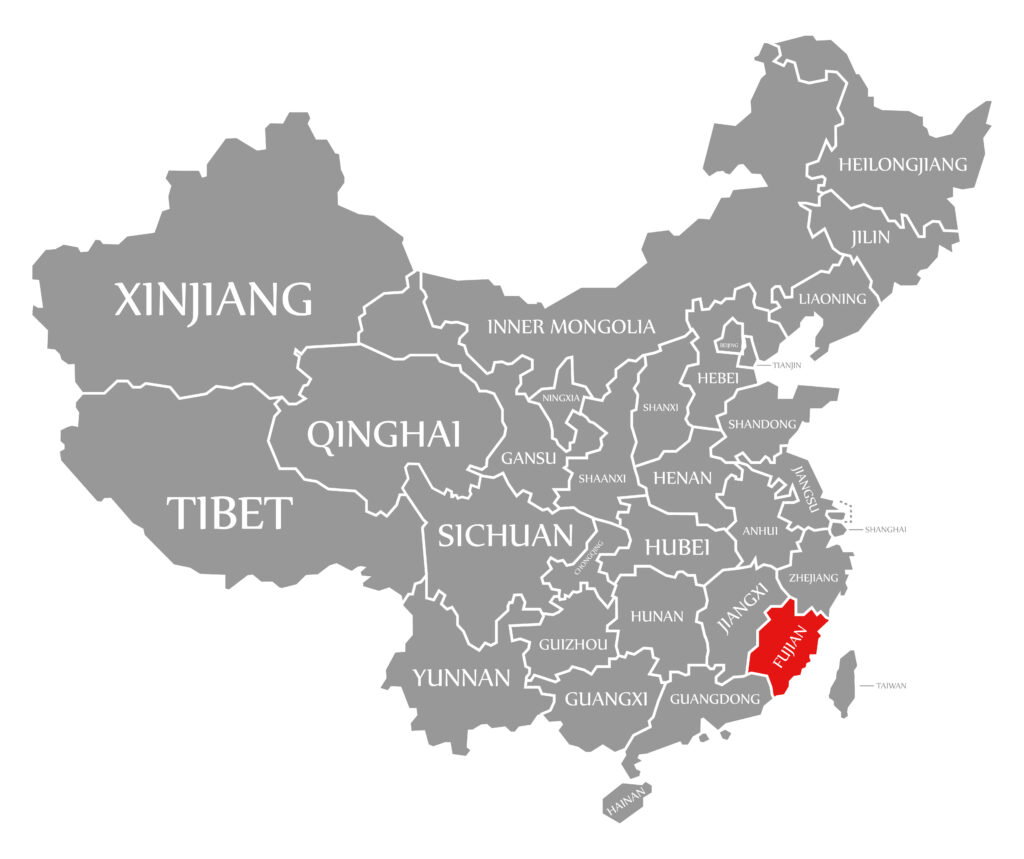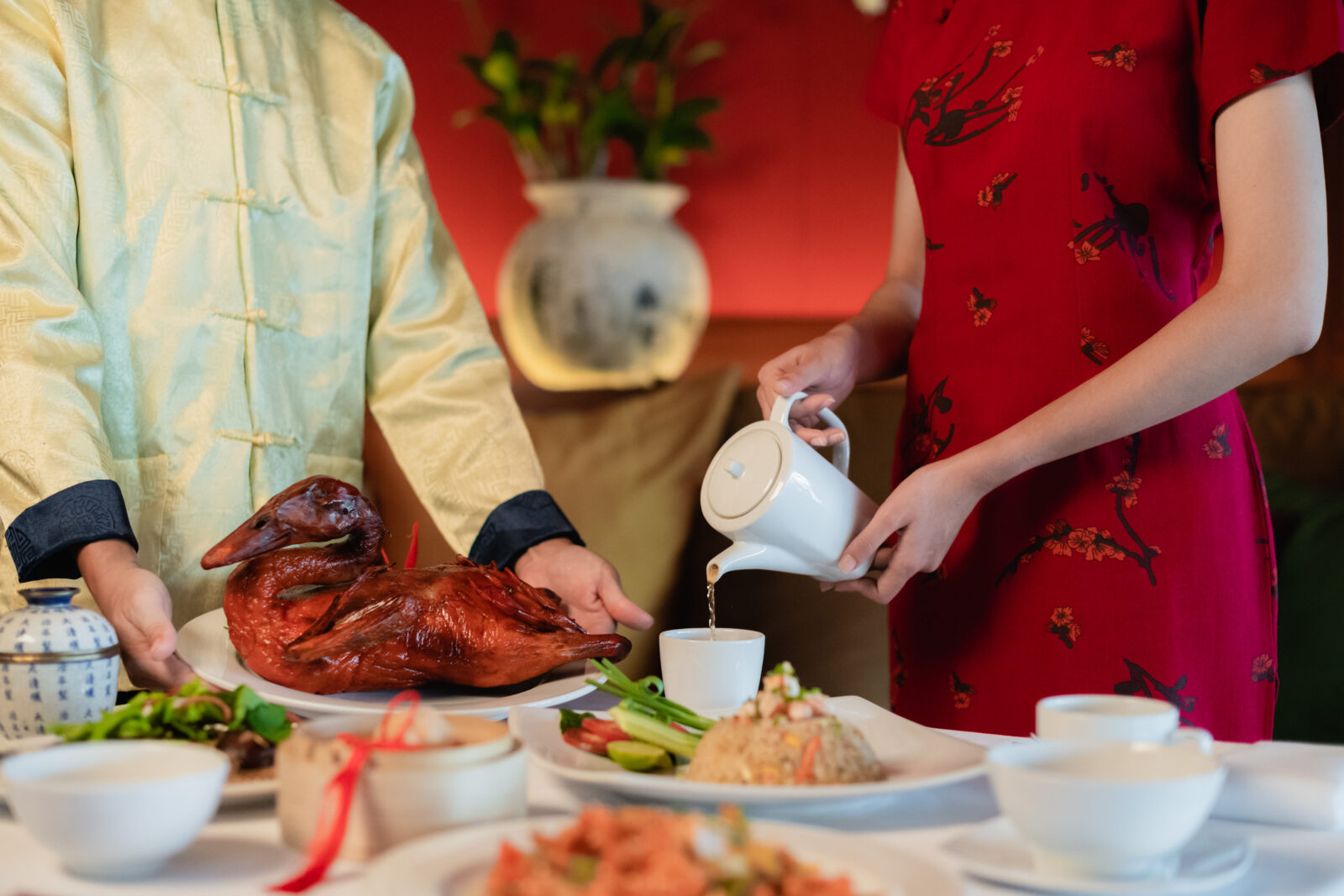Southern China Tea Region a Tea Paradise for Chinese New Years
Happy Chinese New Year! The annual event begins on Saturday, January 22 this year, the second new moon after the winter solstice on December 21. Also known as Lunar New Year — after all, more countries than China honor the calendar that is determined by the moon’s cycles — the holiday stands as a distinct high point for celebrations across China and other Asian countries. Just as with the holiday season in the United States, family gatherings, food and traditions represent the heart of this festive winter period.
Tea figures largely into New Year celebrations: People drink it with every meal, and feasting is an especially convivial pursuit during the holiday’s two-week span. In addition to featuring good-luck foods — like long noodles, spring rolls and steamed chicken — Chinese New Year includes a huge range of traditions.
For example, people clean their houses before it all begins; doing so, according to tradition, washes away the previous year’s bad fortune, and invites good luck to enter the picture. Houses also get decorated with the color red, and street lights are adorned with red lanterns; the color symbolizes prosperity and energy and rejects negativity. During Chinese New Year people give offerings to ancestors, hold family reunions, exchange red envelopes, set off firecrackers and fireworks, watch dragon and lion dances, and much more.

Southern China tea region a tea paradise
Chinese honor the holiday across most of the country, including southern China, one of the country’s four main tea-growing regions. The southern China tea region includes Taiwan, Guangdon, Fujian and Guangxi. We carry tea from all corners of the southern China tea region, which supports some of the country’s most famous teas. Tie Guan Yin (Iron Goddess of Mercy), Baihao Zinhen (White Needle) and Da Hong Pao (Royal Red Robe), for example, all are from the region, which is almost uniformly warm, with significant rainfall and clay soils.
Among the areas within southern China, Fujian is the most famous for tea, especially oolong. In fact, the word tea is derived from a Chinese dialect called Minnan that is spoken in Fujian, as well as Taiwan and other parts of southern China. In terms of volume, Fujian in 2021 produced 488 metric tons of tea, second only to Yunnan in tea production. If you ever visit Fujian, make sure to try one of its most famous dishes, hard-boiled eggs cooked in tea.

The southern China tea region is tea country! In the cities, villages an in rural outposts, you’ll find people sipping tea from morning until they go to bed.
Teas from Southern China Tea Region: Bai Mu Dan White Tea, Fujian

Tea artisans in Fujian harvest white tea leaves from a semi-wild tea garden in the Taimu Mountain area of the province, wither them, and press them into round cakes using traditional stone molds. Not only is this special tea delicious — it offers a thick, textured mouth-feel and a long-lasting sweet aftertaste (hiu gan) reminiscent of wildflower honey — it’s healthy, too. People treasure aged white tea cakes for their reported health benefits, such as curing skin disorders, reducing fever and inflammation, nurturing lung and liver functions and reducing blood pressure.
Teas From Southern China Tea Region: Dan Cong Honey Orchid Oolong, Guandong

GuangDong Province, the most southerly oolong production province in China and an economic powerhouse — Guangdong has the largest and fastest-growing economy among China’s 31 provinces and municipalities — is well-known for its tea excellence. This signature oolong comes from a single grove — that’s what “dan cong” means in Chinese. Each grove of trees in the plantation is harvested and processed individually. And the tea from each grove yields unique types of fragrant leaves, which often broadcast a sweet orchid aroma with notes of apricot.
Teas From Southern China Tea Region: Oriential Beauty Oolong, Taiwan

This famous tea, from Mount Ali in northern Taiwan, relies on an unusual partner for tea production: insects. That’s right, bugs chew the leaves in this region, but instead of destroying the tea, their gnawing enhances the tea’s flavor, which is quite smooth and sweet, with a unique aroma of ripe peaches and honey. Other aspects of Oriental Beauty are also unique. The leaves, for example, look more like fall foliage than the standard green leaves we normally encounter on tea shrubs. In addition, they are normally harvested during summer — those insects need time to dine! — and then tea artisans oxidize the leaves to between 50%-60%, which is more than most Taiwanese oolongs.
Taiwan is famous for oolongs. We carry a variety of them, and trumpet them all. There’s something about Taiwan’s climate and mountainous terroir that helps to produce novel oolongs.

